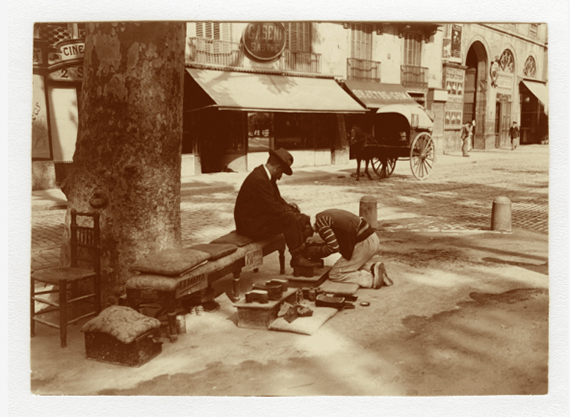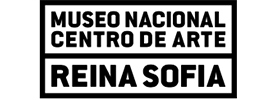
Documentary Genealogies
Photography 1848–1917
Exhibition: 16 Nov 2022 – 27 Feb 2023

Museo Nacional Centro de Arte Reina Sofia (MNCARS)
Santa Isabel, 52
28012 Madrid
+34 91-4675062
direccion.mncars@cars.mcu.es
www.museoreinasofia.es
Mon, Wed-Sat 10-21 . Sun 10-19
Documentary Genealogies.
Photography 1848-1917
starts from Walter Benjamin’s remark in his essay
The Work of Art in the Age of Its Technological Reproducibility
(1936) on the parallel emergence of photography and of socialism. Following such parallel allows the hypothesis that the ideas and iconographies used to represent the everyday life of the working class—which is the constitutive impulse for the rise of documentary discourse and practices in the 1920s, as a specific form of filmic and photographic poetics—were already latent or active in 1840s visual culture. The seminal figure of the bootblack on
Boulevard du Temple
[Boulevard of the Temple, 1838], one of Louis Daguerre’s first daguerreotypes, is the first appearance of the worker in photography: the root of the historical narrative around class relations and conflicts, an axis for the documentary discourse to come.
This exhibition presents a cartography of practices related to the appearance and evolution of representations of subaltern identities—workers, servants, proletarians, beggars, the deprived—stretching from the rise of photography to the turn of the century (more specifically, between the European revolutionary cycle of 1848 and the Russian Revolution in 1917), and inside the framework termed by historian André Rouillé as “the empire of photography”: the rise of a new visual regime that became an instrument for the system of bourgeois, industrial and colonial culture in the second half of the nineteenth century. Such subaltern figures can also be understood as metaphors of Charles Baudelaire’s famous and seminal condemnation to photography which he consigned to a subordinate position, as “the servant of the arts”. The democratic promise of photography was long unfulfilled and remained, for over almost a century, an instrument in the hands of bourgeois culture and its means of representation. Thus, the portraits of the working and subaltern classes were an accidental and marginal incursion, an involuntary presence inside pictures with another intention.
Documentary Genealogies. Photography 1848-1917
closes a series that began in 2011 in the Museo Reina Sofía with the exhibitions
A Hard, Merciless Light. The Worker Photography Movement, 1926-1939
and continued in 2015 with
Not Yet.
On the Reinvention of Documentary and the Critique of Modernism
, both of which offered an alternative narrative of the rise and evolution of documentary discourse in the history of photography, based on case studies at key moments in the twentieth century. This final exhibition contributes to this narrative from a different, proto-historical perspective: an observation of the early promises and potential of photography contained in the fact that the documentary idea and function are as old as photography itself.